Halloween: Meet England's most interesting ghosts
- Published
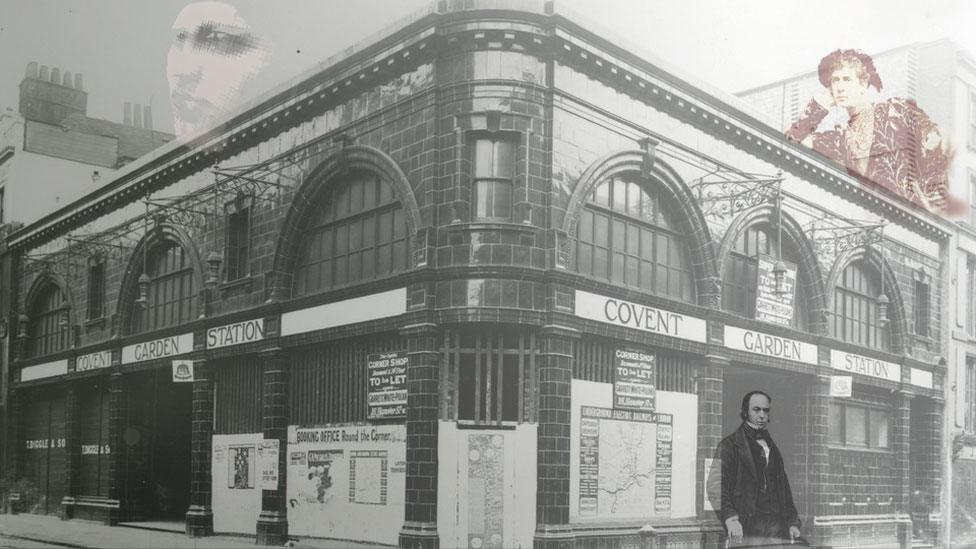
It's Halloween - and tonight's the night ghosts come out to play. Wherever you are in England there could be a local wraith, ghoul or phantom waiting in the shadows. And they are not all generic spooks or mysterious grey ladies. Here are a few of the ghosts to whom we can give a name - and to some, even a face.
So you know exactly who to blame when that chilly miasma descends.

William Terriss

William Terriss was a dashing 19th Century actor, who was murdered at the stage door of the Adelphi theatre in London. The matinee idol had drawn thousands to his performances in popular melodrama.
At the time of his death he was portraying Captain Thorne in "Secret Service". He spent the afternoon of Thursday 16th December 1897 playing whist at his West End club before taking a taxi to the theatre at about 19:00. As he entered the building, a man rushed across the street and stabbed him.
The killer was Richard Prince, a fellow actor who had appeared in several plays alongside him. Prince was mentally unstable and believed Terriss had prevented him from getting roles. Convicted of murder, Prince was sent to Broadmoor Criminal Lunatic Asylum.
Terriss, meanwhile, was not at rest. He is said to haunt the theatre and the site of a bakery he used to visit. The bakery was demolished when Covent Garden underground station was built, and according to 1950s ticket inspector Jack Hayden, Terriss, wearing a top hat, frock coat and grey suit, would rattle the door of the office.
He's also been spotted in the tunnels and the staff room. When approached, he disappears into thin air.
Richard Prince, too, lingers on - not as a ghost (as far as we know) but as a role in a play called The Murder Club, one of the Lullabies of Broadmoor, external.
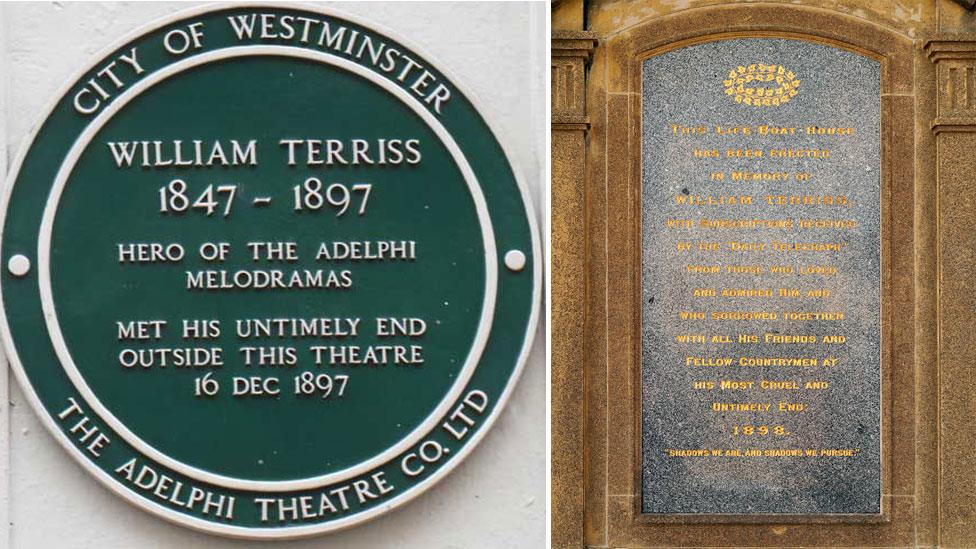
A plaque marking William Terriss' life - and murder - is on the Adelphi theatre. Money was raised to pay for a lifeboat station in Eastbourne - where his daughter lived - in the actor's honour

Dame Armine
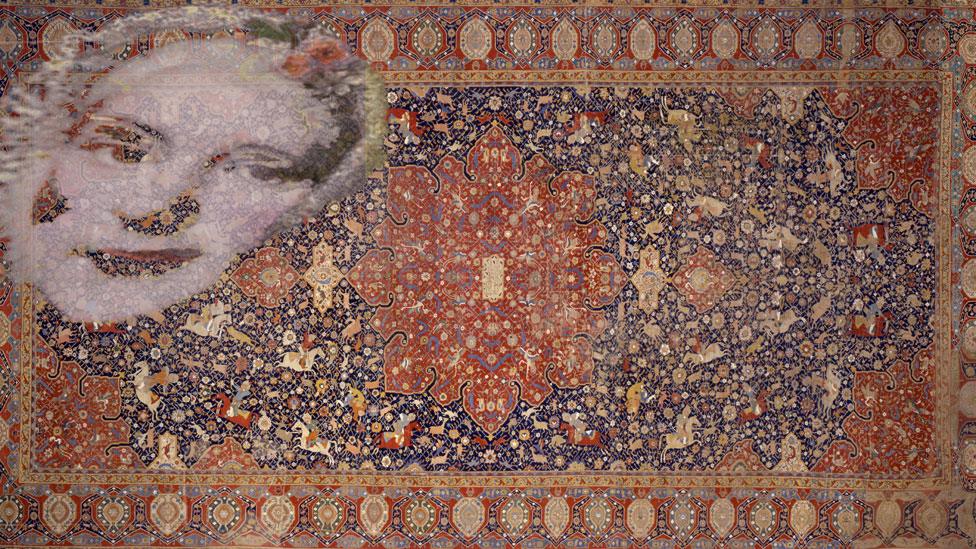
Dame Armine's spirit was furious about a carpet
The widowed Armine Le Strange Styleman inherited Hunstanton Hall in Norfolk after her brother Henry died childless. The wealthy family owned many treasures - but above all, Armine loved a carpet she had been given by the Shah of Persia.
Her obsession for the floor-covering was such that on her deathbed she issued a threat - if the carpet was removed from the ancestral home, she would come back and haunt the hall. Her son agreed and when she died, he put it in a trunk and stored it safely.
Nearly a century later, a new mistress - Emmeline - arrived at the family pile and opened the trunk. Seeing a tatty old carpet, she chopped it into pieces to distribute to the local poor.
Returning home after handing out the bounty to the grateful needy, Emmeline saw a ferocious grey face at the window and later recognised Armine - both from a family portrait and because the ghoul looked strikingly similar to her new husband, Armine's descendant Hamon Le Strange.
The couple reported that candles would blow out and ghostly footsteps plodded the corridors until Hamon remembered the family legend about the carpet.
Despite the couple eventually retrieving the pieces of rug and stitching them together again, Armine's angry soul did not rest. Generation after generation claimed to have seen the apparition or felt its effects.
Armine is said to still haunt the hall, which has now been converted into flats. All for a carpet.

Isambard Kingdom Brunel
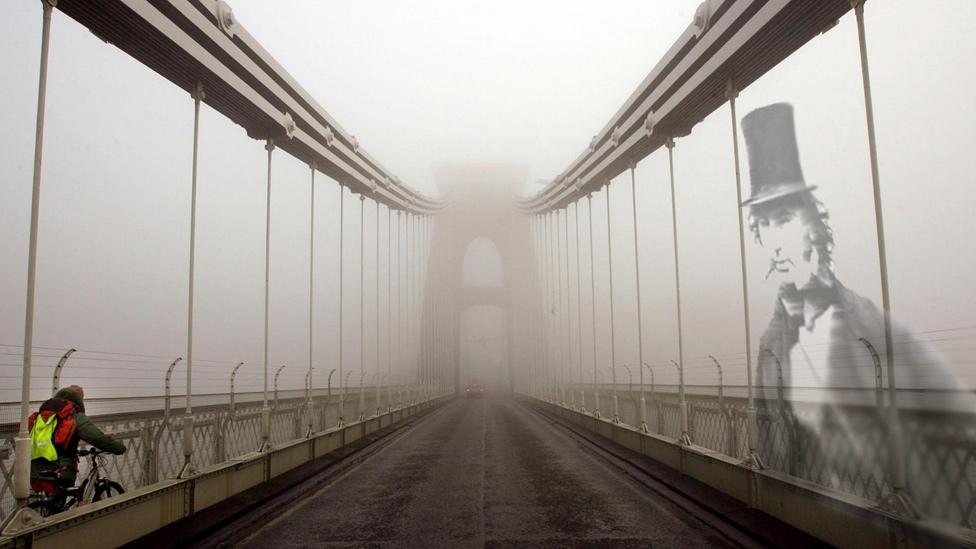
In life, Isambard Kingdom Brunel kept himself busy with the design and construction of a network of tunnels, bridges and viaducts for the Great Western Railway.
According to some, he has kept himself equally busy in death.
Since dying of a stroke in 1859, he is alleged to have stalked around the now permanently-closed British Empire and Commonwealth Museum in Bristol, where he once had an office.
Staff reported the smell of tobacco smoke and "steady footsteps" as the top-hat-wearing engineer paced the halls.
He has also been reported lurking at the site of the Clifton Suspension Bridge, which he designed but never saw completed.

Count Louis Zborowski
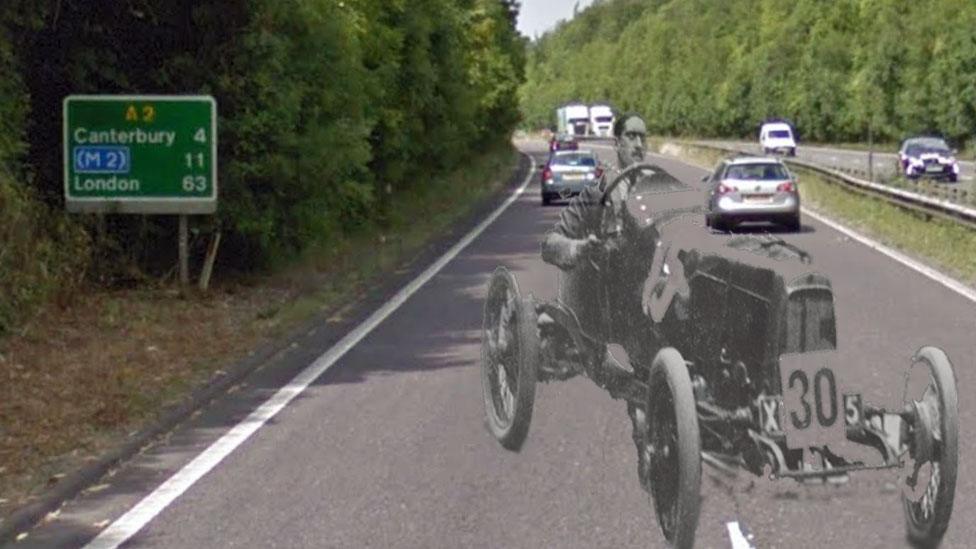
Count Louis Zborowski can sometimes be heard zooming along the A2 near Canterbury
Count Louis Zborowski, the wealthy son of a Polish Count and an American mother, was an English racing driver and car engineer who built a number of racing motors called Chitty Bang Bang. These were the inspiration for a certain Ian Fleming and his tale of a magical car.
Aged just 16, he inherited a vast fortune, including Higham Park House - a country pile near Canterbury in Kent - and dedicated his life to the pursuit of speed.
Wearing a variety of brightly-coloured golfing caps, the dashing count raced for Aston Martin at Brooklands, in Surrey, as well as at the French and Italian grand prix and at the Indianapolis 500.
He joined the Mercedes team in 1924 but died aged 29 when his car hit a tree during the Italian Grand Prix. His ghost is now said to haunt his ancestral home.
Guests at Higham Park House have reported hearing the phantom sounds of a car tearing up the drive, stopping to let someone out, and roaring off again to race along the A2.
When the engine stops, the doors of one of the house's rooms apparently bursts open and the count has also been spotted striding across his land, sporting one of his distinctive golfing caps.
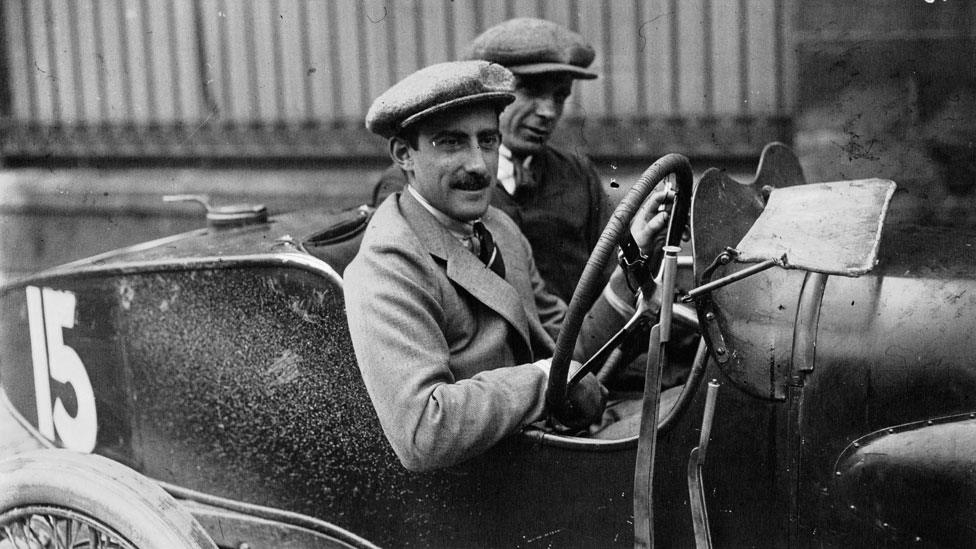

Jean Baptiste du Barre
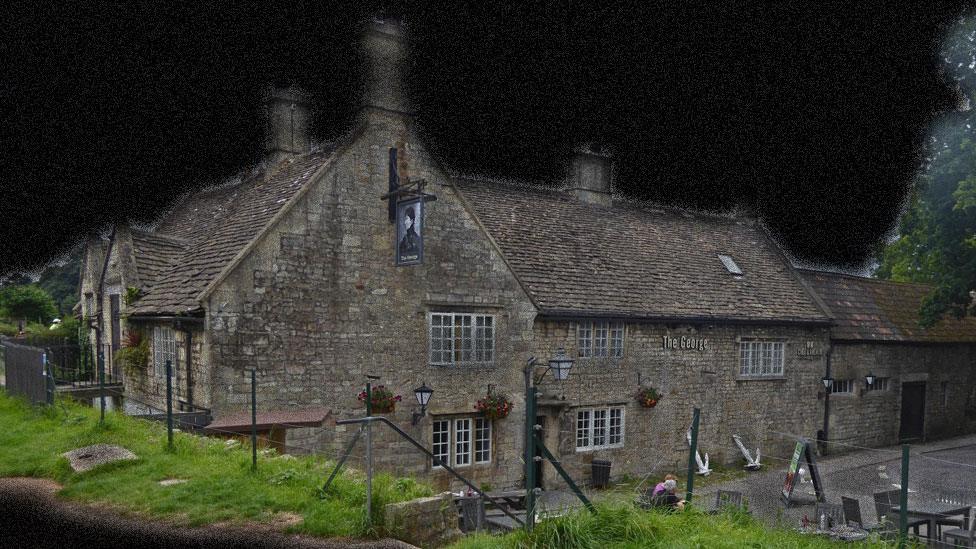
The Vicomte du Barre visited Bath in the summer of 1778 with his wife and sister, and a friend called Captain Rice. They took a lease at a fashionable address and arranged lavish card parties in the house, hoping to profit from the gambling mania that gripped the city at that time.
One night the count and his friend quarrelled over the sharing of £600 they had won. Capt Rice threw down his glove. The challenge was accepted.
They headed off to Claverton Down. Du Barre fired his pistol first, and wounded his friend in the thigh. Capt Rice's aim, though, was more deadly. Du Barre was hit in the chest.
He was taken to the nearby George Inn in Bathampton where he died.
Rice was tried for murder and acquitted, after which he went to Spain.
Du Barre was buried in Bathampton churchyard, but several landlords have said they saw his spirit propping up the bar at the George.
He's said to be "of friendly countenance". Just don't play cards with him.

Brainy Dobbs
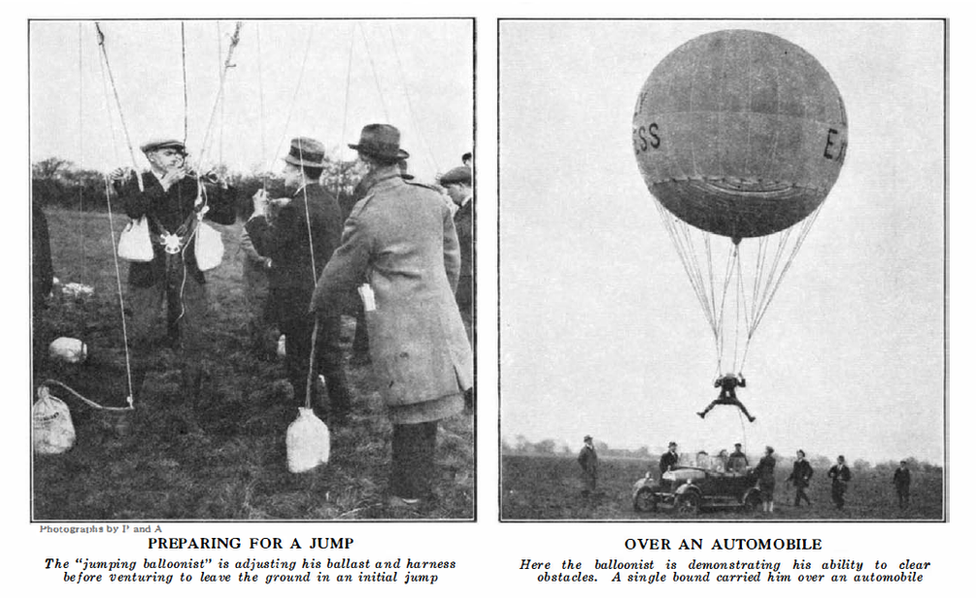
Aircraftman "Brainy" Dobbs was a fan of "balloon hopping" - a largely-forgotten sport of the 1920s which involved the participant being harnessed to a gas balloon before bouncing across the landscape. Dobbs, a parachutist in the RAF, was a trailblazer for the pastime.
This came to an abrupt halt in 1927, when he was at Stag Lane aerodrome in Hendon, north London. Dobbs was making gigantic leaps across the field, rising to over 100 ft and then settling back to earth before propelling himself once more into the air. Unfortunately he sailed into electric power cables and died.
Now the airman, who got his nickname because of his many eccentric flying experiments, is said to haunt his former barracks at RAF Henlow in Bedfordshire. On cold and windy nights he can be heard walking through the hangars.
Some witnesses have said they have been shoved in the back by a rush of chilly air, and at least one has reported poltergeist-style activity when his room - formerly Dobbs' - was trashed.
Spooky.